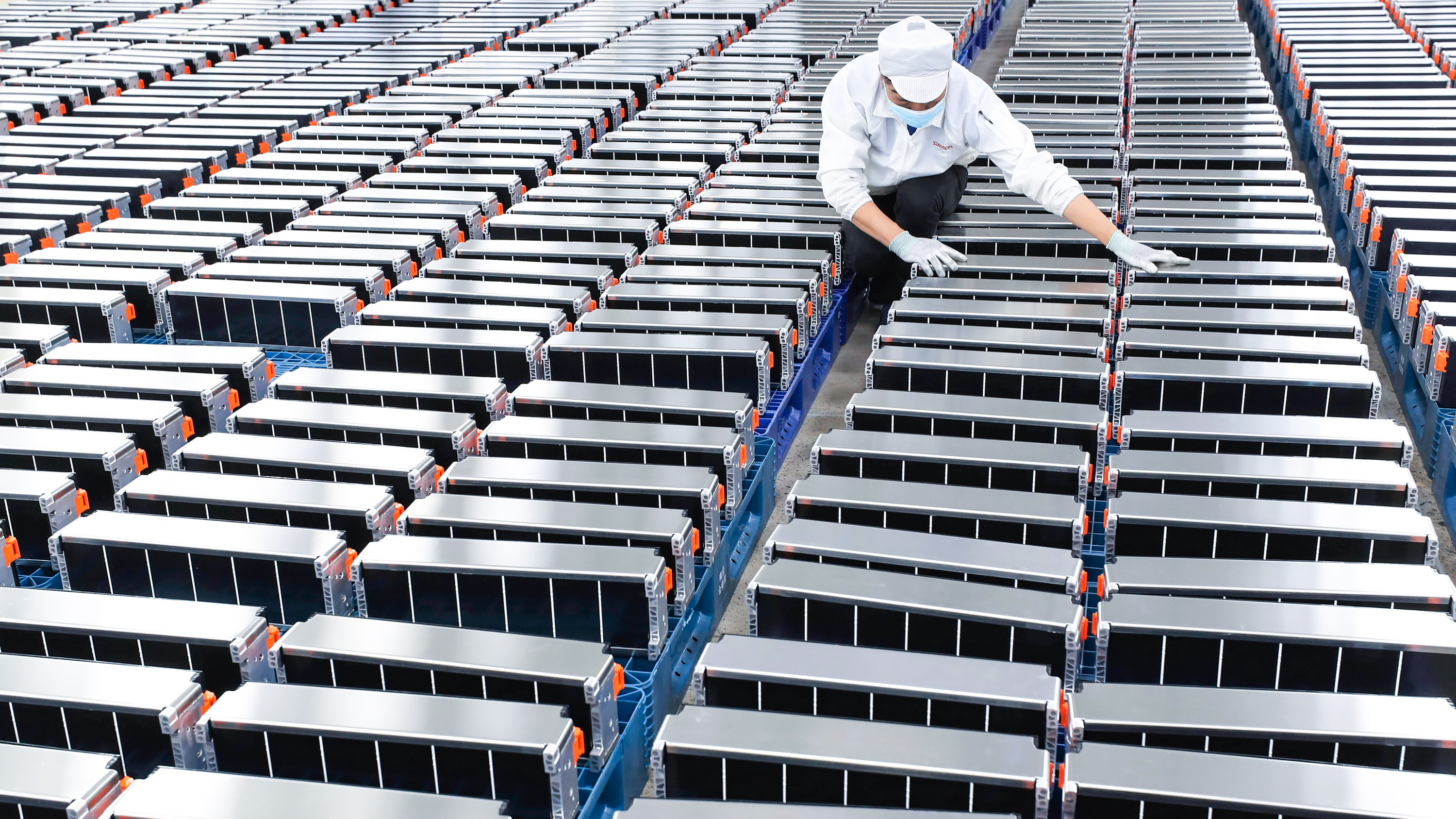EV tax credits could stall out on lack of US battery supply
Rules call for US-made batteries and domestically sourced minerals, but there won’t be enough of either if EV sales take off.

A tax credit in the Inflation Reduction Act of 2022 designed to spur adoption of EVs could fail to reach consumers because of the auto industry’s heavy reliance on battery materials and components from China.
To qualify for the credit, which could effectively shave up to $7,500 off the price of a new EV, the battery and key minerals used in it must be sourced from the US or from countries it has free-trade agreements with. Currently, most lithium-ion cells for EV batteries are built in China, and the US manufactures only about 7%.
The legislation is an attempt to incentivize companies to build more capacity for mining and battery manufacturing in the US. The restrictions could eventually help build a secure supply chain for batteries in the US and create more manufacturing and mining jobs. But some experts are uncertain how quickly US companies will be able to respond. The danger, then, is that the tax credits could have only a limited impact on EV sales in the near term, if qualifying batteries and the minerals that go into them are in short supply.
There are two major parts to the new rules. First are the limitations around the critical minerals used in the battery, like lithium, nickel, and cobalt. Starting when the tax credits kick in at the start of 2023, 40% of these minerals in the car’s battery must be mined, processed, or recycled in the US or a free-trade partner. This ramps up over time, hitting 80% in 2026.
There’s also guidance about where the battery is actually made—starting in 2023, half the components need to be manufactured or assembled in North America. This reaches 100% by 2029.
Finally, a vehicle can be excluded from the tax credits if any mining, processing, or manufacturing for a battery is done by a “foreign entity of concern.” This requirement takes effect in 2024 for the battery components and in 2025 for critical minerals.
While it’s not clear exactly which countries will count in this definition, the rules are an obvious attempt to slow China’s dominance in the battery business, says Jonas Nahm, a professor of energy, resources, and environment at Johns Hopkins.
However, he adds, the timelines are “hugely ambitious,” and the bill is “basically setting targets that people may be unable to meet.”
Last week, E&E News reported that climate activists are already worried about whether carmakers will be able to satisfy the new requirements.
Battery manufacturing is growing in the US and Europe, and leading domestic car makers, like GM, have recently announced investments to build massive new battery factories. But the US has a lot of catching up to do.
About 80% of lithium-ion battery cells are made in China today. The country also dominates the supply chain for many of the materials used in batteries, including critical minerals, says Henry Sanderson, executive editor at Benchmark Minerals Intelligence.
Almost all the graphite used for battery electrodes comes from China and is processed there, Sanderson says. Lithium, while mined mostly in countries such as Australia and Chile, is processed in China as well.
Nickel could also be difficult to source for automakers hoping to qualify for the credits, Sanderson says, since most of it is processed in Indonesia, which doesn’t have a free-trade agreement with the US.
Planning and building new mines can take upwards of seven years, meaning that mineral supply isn’t something that can change overnight. Recycling could eventually supply a significant amount of battery materials, but it’s unlikely it will make a dent anytime soon, Sanderson says, since the number of EVs reaching the end of their life right now can’t keep up with the exponentially rising demand.
In any case, setting requirements for batteries tied to consumer tax credits won’t be enough to actually transform supply chains, Nahm says. Other supporting programs included in the new bill, like production tax credits and loans for building new factories, will also be key.
The ambitious EV tax credits could play a role in building domestic battery manufacturing and encouraging new supply chains in the US. But whether those changes will come fast enough to keep up with booming EV sales remains very much an open question—one that will likely determine just how effective the new bill is in transforming the US vehicle fleet.
Deep Dive
Climate change and energy
The problem with plug-in hybrids? Their drivers.
Plug-in hybrids are often sold as a transition to EVs, but new data from Europe shows we’re still underestimating the emissions they produce.
Harvard has halted its long-planned atmospheric geoengineering experiment
The decision follows years of controversy and the departure of one of the program’s key researchers.
Why hydrogen is losing the race to power cleaner cars
Batteries are dominating zero-emissions vehicles, and the fuel has better uses elsewhere.
Decarbonizing production of energy is a quick win
Clean technologies, including carbon management platforms, enable the global energy industry to play a crucial role in the transition to net zero.
Stay connected
Get the latest updates from
MIT Technology Review
Discover special offers, top stories, upcoming events, and more.